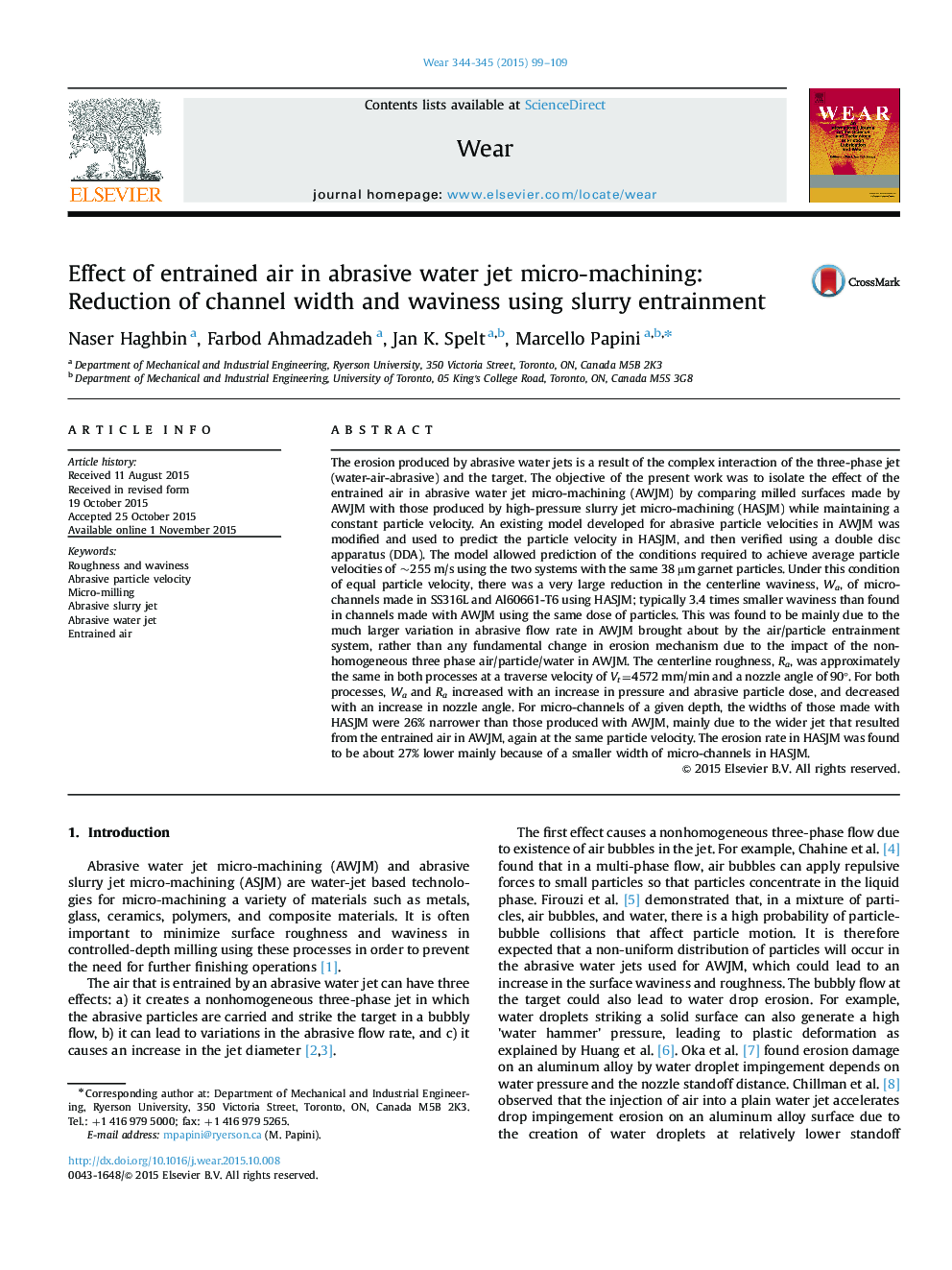| کد مقاله | کد نشریه | سال انتشار | مقاله انگلیسی | نسخه تمام متن |
|---|---|---|---|---|
| 617058 | 1454969 | 2015 | 11 صفحه PDF | دانلود رایگان |
• The air effects in abrasive water jet micro-machining (AWJM) were investigated.
• A model was modified to predict the particle velocity, then verified using a DDA.
• The centerline waviness of micro-channels in AWJM was 3.4 times higher than HASJM.
• The centerline roughness was approximately the same in both processes.
• The widths of micro-channels at a given depth in HASJM were 26% narrower than AWJM.
The erosion produced by abrasive water jets is a result of the complex interaction of the three-phase jet (water-air-abrasive) and the target. The objective of the present work was to isolate the effect of the entrained air in abrasive water jet micro-machining (AWJM) by comparing milled surfaces made by AWJM with those produced by high-pressure slurry jet micro-machining (HASJM) while maintaining a constant particle velocity. An existing model developed for abrasive particle velocities in AWJM was modified and used to predict the particle velocity in HASJM, and then verified using a double disc apparatus (DDA). The model allowed prediction of the conditions required to achieve average particle velocities of ~255 m/s using the two systems with the same 38 µm garnet particles. Under this condition of equal particle velocity, there was a very large reduction in the centerline waviness, Wa, of micro-channels made in SS316L and Al60661-T6 using HASJM; typically 3.4 times smaller waviness than found in channels made with AWJM using the same dose of particles. This was found to be mainly due to the much larger variation in abrasive flow rate in AWJM brought about by the air/particle entrainment system, rather than any fundamental change in erosion mechanism due to the impact of the nonhomogeneous three phase air/particle/water in AWJM. The centerline roughness, Ra, was approximately the same in both processes at a traverse velocity of Vt=4572 mm/min and a nozzle angle of 90°. For both processes, Wa and Ra increased with an increase in pressure and abrasive particle dose, and decreased with an increase in nozzle angle. For micro-channels of a given depth, the widths of those made with HASJM were 26% narrower than those produced with AWJM, mainly due to the wider jet that resulted from the entrained air in AWJM, again at the same particle velocity. The erosion rate in HASJM was found to be about 27% lower mainly because of a smaller width of micro-channels in HASJM.
Journal: Wear - Volumes 344–345, 15 December 2015, Pages 99–109
